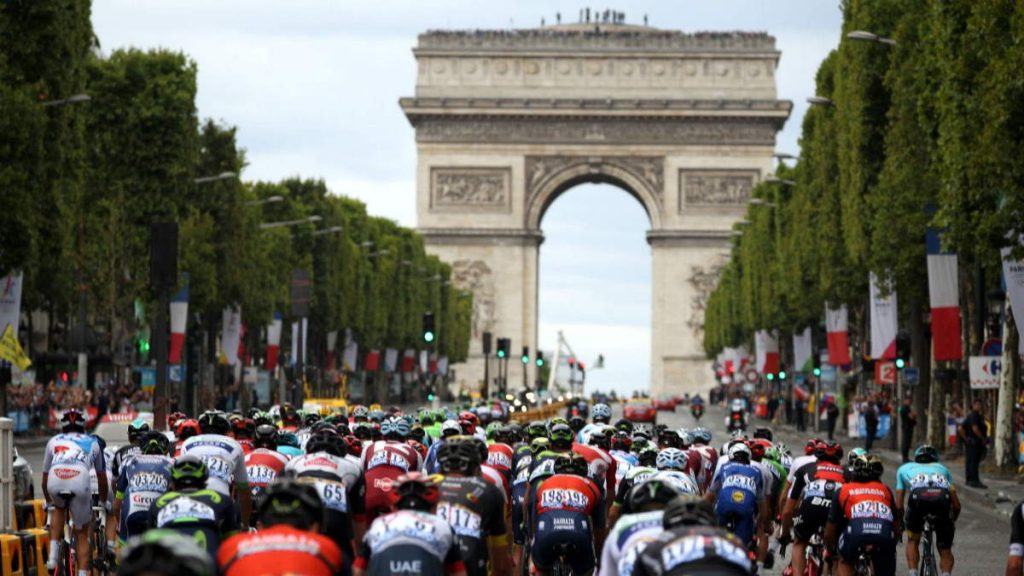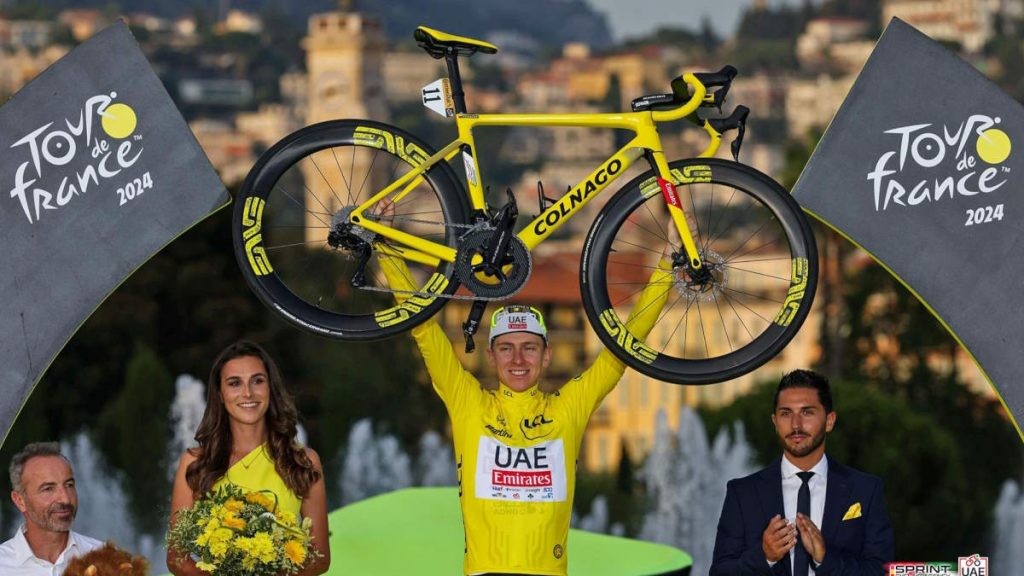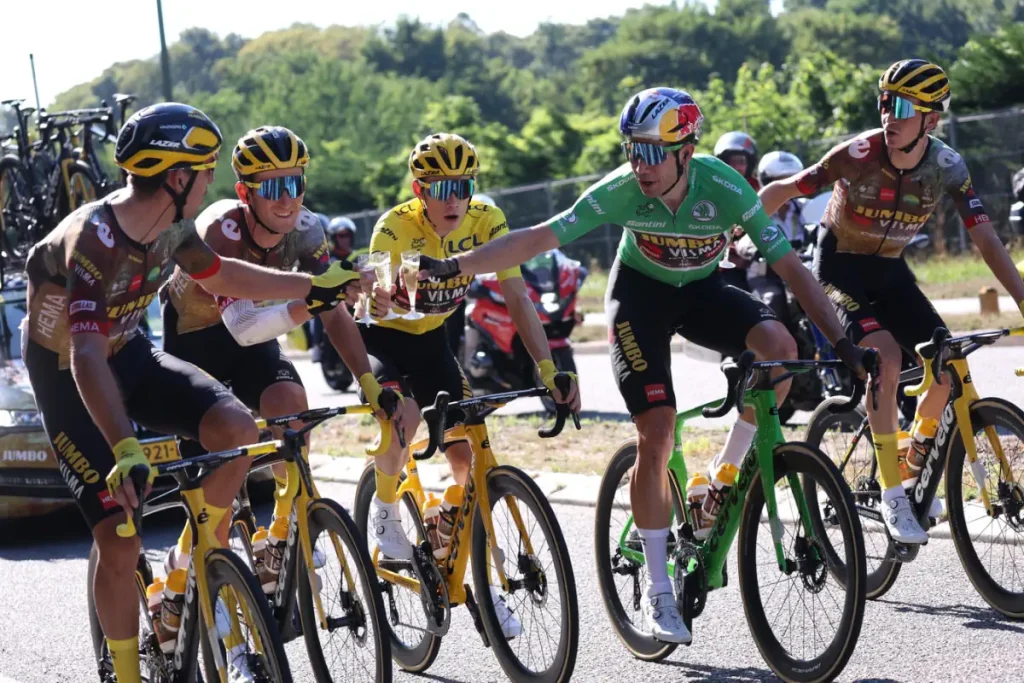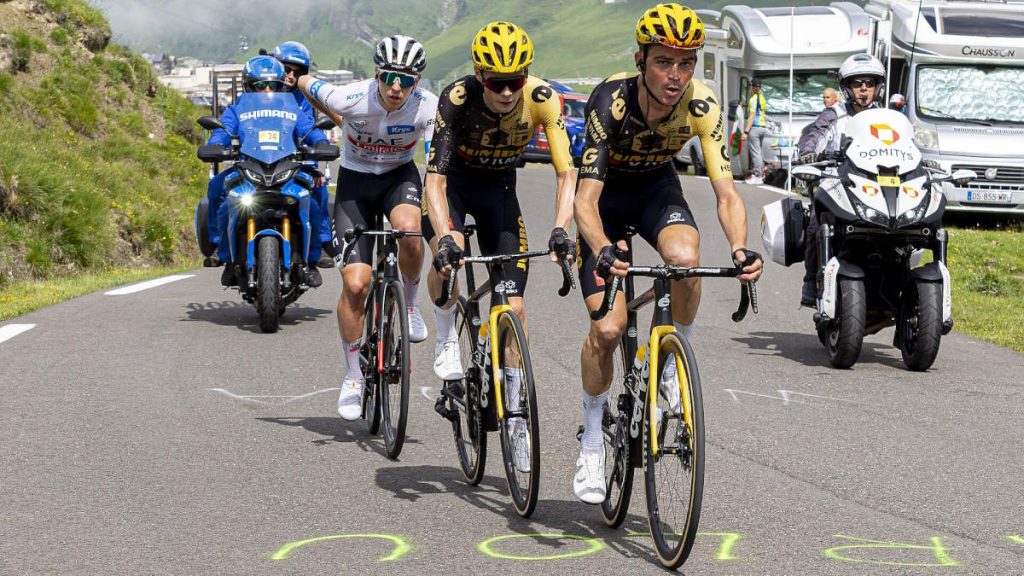Every summer, millions around the world tune in to watch the Tour de France, the biggest bicycle race on the planet. You might have caught glimpses of cyclists racing through breathtaking mountain passes, or seen the winner in a yellow jersey sprayed with champagne on the podium. But what is this event really about? Why do cyclists push themselves to the absolute limit for three relentless weeks? In this Q&A guide, we break down everything you need to know to fully appreciate the Tour de France.
With over 120 years of history since its first edition in 1903, the Tour de France is more than just a race-it’s a global sporting spectacle. Covering approximately 3,500 km (2,175 miles) over 21 stages in 23 days, this event tests not just the physical endurance but also the mental strength, strategy, and teamwork of the world’s top cyclists. Here’s your easy-to-read Q&A to make sense of it all.
Tour de France Explained: Your Essential Guide to Cycling’s Biggest Race
What exactly is the Tour de France? How does Tour de France work?
The Tour de France is a three-week-long cycling race held every July, mostly in France but sometimes visiting neighboring countries. Over the course of 23 days, riders compete over 21 stages of various terrains: flat, hilly, mountainous, and time trials.
There are 21 stages because the Tour is designed to spread over three weeks, with two designated rest days to allow riders some recovery time. A typical schedule looks like this: the race starts on a Saturday, followed by nine consecutive days of racing, then the first rest day on Monday. After that, there are six more days of racing, another rest day (again on Monday), and then the final stretch of six race days leading to the finish, traditionally in Paris.
While the race is primarily held within France, it often begins or passes through neighboring countries such as Belgium, Italy, Spain, or even the UK, reflecting its international appeal. The route changes every year, but the race traditionally ends in Paris on the iconic Champs-Élysées, where the winner dons the famous yellow jersey-a global symbol of cycling excellence.

Each edition of the Tour is made up of a mix of flat sprint stages, mountain stages (including legendary climbs in the Alps and Pyrenees), hilly stages, and at least one individual or team time trial where cyclists race alone or with their team against the clock.
The event isn’t just about who crosses the finish line first each day-riders also compete for different jerseys: green for the best sprinter, polka-dot for the best climber, white for the best young rider, and of course, yellow for the overall leader.
Success in the Tour requires not only sheer physical endurance but also teamwork, strategy, mental toughness, and precise energy management. It’s this combination of factors that makes the Tour de France not just a race, but a true test of human limits and one of the greatest spectacles in sport.

Why is Tour de France So Popular?
The Tour de France is one of the most popular sporting events in the world because it combines elite athleticism, stunning landscapes, and rich history. Held every July since 1903 (except during wars), it spans 21 stages over 3 weeks, drawing millions of roadside spectators and a global TV audience.
The drama of mountain climbs, crashes, team tactics, and the fight for the iconic yellow jersey captivate fans. It’s not just a race; it’s a national celebration in France and a worldwide spectacle. Each stage tells a story of endurance, strategy, and human willpower. Its deep cultural roots and unforgettable moments make it more than a sporting event – it’s a tradition.
How long is the Tour de France?
The race covers about 3,500 km (2,175 miles), roughly the distance from New York to Las Vegas. Cyclists race nearly every day for three weeks with only two rest days, as explained above.
Who competes in the Tour de France?
A total of 22 teams with 8 riders each (176 riders total) take part. These are elite cyclists from all over the world: Europe, the USA, Australia, Latin America, and more.
The majority of the teams (18) belong to the UCI WorldTour, the highest tier of professional road cycling. These teams are guaranteed entry into all the biggest races on the calendar, including the Tour de France, and they field some of the most famous names in the sport.
Alongside them, there are four Pro Continental teams (now officially called UCI ProTeams), which are a level below the WorldTour but often receive wildcard invitations to compete. These wildcard teams are usually local French squads or rising international teams with strong talent or fan appeal. For them, participating in the Tour is not just a competition-it’s a chance to showcase their sponsors, win prestigious stages, and possibly even launch the careers of their riders onto the global stage.
This mix of powerhouse teams and ambitious underdogs is part of what makes the Tour de France so dynamic and unpredictable. While the overall victory-the coveted yellow jersey-typically goes to a rider from one of the elite WorldTour teams, stage wins can come from anywhere, including from lesser-known wildcard teams willing to take bold risks.

Can I enter the Tour de France?
Sure-if you’re one of the elite athletes riding for one of the 22 teams invited to the race! That includes the 18 top-tier UCI WorldTour teams plus 4 wildcard Pro Continental teams selected by the organizers. And even then, you still have to make your team’s Tour squad since not every pro gets to ride the Tour de France. So, unless you’re already racing at the highest level of professional cycling… maybe stick to watching (or join your local club for a less intense ride!).
What types of cyclists are there?
- Climbers excel on steep mountain stages, where endurance, lightweight build, and explosive power on ascents give them an advantage over heavier riders. They often shine in the high Alps or Pyrenees, attacking on the toughest climbs to gain time.
- Sprinters dominate flat finishes, using their explosive speed to surge past rivals in the final few hundred meters. They rely on powerful legs and precision timing, often supported by a “lead-out train” of teammates who position them for the perfect sprint.
- Time Trial Specialists are experts in solo efforts against the clock, racing alone on flat or rolling terrain. They use aerodynamic bikes, special helmets, and pacing strategies to cover the course as fast as possible without drafting or team assistance.
- GC (General Classification) Riders aim for overall victory by consistently performing well in every terrain-mountains, time trials, and flats. These riders must be all-rounders: strong climbers, decent time trialists, and smart tacticians to stay at the front over three grueling weeks.
- Domestiques are dedicated support riders who sacrifice their own chances to help their team leaders. They fetch food and water, set the race pace, shield teammates from the wind, and chase down breakaways-playing a crucial role in the team’s overall strategy.
How is the winner of the Tour de France decided?
The General Classification (GC) winner-the overall winner of the Tour de France-is the rider with the lowest cumulative time across all stages. This rider wears the famous yellow jersey (maillot jaune), the most prestigious symbol in cycling, awarded to the fastest rider from start to finish over the three weeks.
But the Tour de France isn’t just about the yellow jersey. There are several other competitions within the race, each with its own distinctive jersey:
- The Green Jersey (maillot vert) is awarded to the leader of the Points Classification. Points are earned by finishing high on flat stages and winning intermediate sprints. This jersey typically goes to the most consistent sprinter.
- The Polka Dot Jersey (maillot à pois rouges) rewards the King of the Mountains-the best climber. Riders earn points by being among the first to reach the summit of categorized climbs, with more points awarded for the hardest ascents.
- The White Jersey (maillot blanc) is for the best young rider-the highest-ranked GC rider under the age of 26. It showcases the rising stars of the sport and often hints at future champions.
In addition to the individual jerseys, there are also prizes for the most aggressive rider (awarded daily for combativity) and the team classification, which honors the team with the lowest combined time of their top three riders.
There’s also Lantern Rouge, the unofficial title for the last-place finisher, similar to the Giro d’Italia’s maglia nera.

Is there prize money?
Yes. In 2024:
- Overall GC winner: €500,000
- Second place: €200,000
- Third place: €100,000
- Stage winners: €11,000 each
- Green, Polka Dot, and White Jersey winners: €20,000 – €25,000
Prizes are typically shared among team members.
What kind of bikes do they use in the Tour de France?
Riders use cutting-edge carbon fiber road bikes equipped with:
- Hydraulic disc brakes
- Electronic gear shifting
- Power meters
- Aerodynamic designs
All bikes must meet strict UCI rules, including a minimum weight of 6.8 kg. Time trials use special ultra-aero bikes.
Why do cyclists ride in groups?
Cyclists ride in groups primarily to save energy and increase efficiency. This is due to a principle called drafting (or slipstreaming). When a cyclist rides directly behind another rider, they face significantly less air resistance-sometimes up to 30-40% less. At high speeds, especially in professional cycling, wind resistance is the biggest factor that slows riders down. By staying in the slipstream of the rider in front, cyclists can conserve energy, allowing them to ride faster and longer with less effort.
Riding in groups, also called the peloton, offers other advantages too. It provides protection from crosswinds, helps riders respond to attacks or breakaways more quickly, and allows for better team strategy. In professional races like the Tour de France, teams use group riding to control the pace, chase down opponents, or set up their sprinter for a stage win.
Group riding is also safer in many situations. Cyclists can warn each other about road hazards and help with mechanical issues. For amateurs and casual riders, group rides provide motivation, camaraderie, and shared experience.
In short, riding in groups is both a scientific strategy and a social tradition in cycling-offering physical, tactical, and psychological benefits.
What makes the Tour de France so tough?
The Tour de France is often called the hardest sporting event on Earth-and for good reason. Riders face an extraordinary physical and mental challenge every single day for three weeks.
Each stage typically involves 4 to 6 hours of cycling, sometimes longer on mountain days, covering distances that can exceed 200 kilometers (124 miles). The constant strain on the legs, lungs, and heart over such long distances takes an immense toll on the body.
The mountain stages are the heart of what makes the Tour de France so brutally difficult. Riders must conquer legendary climbs in the Alps and Pyrenees, such as Col du Tourmalet, Alpe d’Huez, and Mont Ventoux, where roads that rise steeply for 15 to 20 kilometers (9 to 12 miles) or more, with gradients often exceeding 8-10%.
These ascents push every physical system to the limit: lungs, heart, legs, and mind. Climbing at high altitude adds another layer of suffering. As the air thins, oxygen becomes scarce, making each breath less effective. Riders have to produce immense power while their bodies scream for air.
On top of that, weather in the mountains is unpredictable-scorching heat at the base can turn to cold rain or even hail near the summit. The mountains are where time gaps are created in the General Classification. A bad day on a climb can cost a rider minutes-or even their place in the race. While teamwork matters, on the steepest slopes it’s often one rider alone against gravity. These relentless climbs, repeated over multiple stages, are why the mountains are where the Tour de France is won or lost, and where true legends are born.
Weather is another unpredictable enemy. Cyclists race through heatwaves, freezing rain, hail, and strong winds-sometimes all in the same stage. Crashes are common, and injuries can end a rider’s Tour in seconds.
To fuel this effort, riders must consume up to 8,000 calories per day, yet many still lose weight by the race’s end. Despite this massive intake, the constant energy expenditure burns through body fat and muscle.
Finally, there’s the psychological pressure of strict time cut rules. If a rider finishes outside the set time limit, even by seconds, they are disqualified-no matter how hard they’ve ridden.
It’s this combination of extreme endurance, savage terrain, harsh conditions, relentless pacing, and mental pressure that makes the Tour de France a true test of human limits.

What are time trials?
In Time Trials (TTs), cyclists race alone against the clock over a set distance. Unlike regular stages where riders compete head-to-head, in a time trial each rider starts separately at timed intervals, and the goal is simple: complete the course in the fastest time possible. There’s no drafting, no teammates to hide behind-it’s just the rider, the road, and the relentless ticking of the clock.
To maximize speed, cyclists use special aerodynamic bikes, skinsuits, and aero helmets designed to reduce air resistance. Riders must pace themselves carefully: going too hard too soon can lead to exhaustion, but going too easy means losing precious seconds. Time trials can be flat, hilly, or even feature mountain climbs, and they often have a massive impact on the General Classification (GC) standings-sometimes deciding the overall winner in the final days of the Tour de France.
There are also Team Time Trials (TTTs), where the entire team races together against the clock. Riders take turns at the front while teammates draft behind to save energy. The team’s finishing time is typically taken when a specific number of riders (often the fourth rider) crosses the line. TTTs test not only individual strength but also teamwork, coordination, and pacing. A well-executed TTT can catapult a team leader into yellow, while a poor performance can be disastrous for GC hopes.
Time trials-whether solo or team-are known as “the race of truth” because there are no tactics or hiding places. It’s pure power, strategy, and mental toughness.

How does the Tour end?
The Tour de France traditionally ends with the final stage finishing on the Champs-Élysées in Paris, one of the most famous and picturesque avenues in the world. The day begins with a ceremonial ride into the city, where riders celebrate surviving three grueling weeks of racing.
The yellow jersey-the overall race leader-is honored during this relaxed portion, often seen sharing champagne with teammates. By long-standing tradition, no one attacks the yellow jersey during this procession, as the overall victory is considered settled unless the time gaps are razor-thin.
However, once the race reaches central Paris, the atmosphere changes dramatically. The riders take on multiple laps of the Champs-Élysées circuit, and what follows is a high-speed, all-out sprint battle. Sprinters and their teams fight for one of the most coveted stage wins in professional cycling. Winning on the cobbled boulevard with the Arc de Triomphe in the backdrop is a career-defining moment for any rider.
While the General Classification (GC) rarely changes on the final day, the prestige of the stage victory and the electric crowd make this a spectacular and emotional conclusion to the world’s greatest cycling race.

With this guide, you’re now ready to follow the next Tour de France like a pro. Whether you’re watching for the strategy, the sheer endurance, or just the spectacular scenery, there’s something in the Tour for everyone.
- UCI Elite Men Road Race World Champions: The Complete List [1927-2025] - September 28, 2025
- What Is Zone 2 In Cycling? - September 12, 2025
- The Turkish Flag at the Tour de France: Who’s Waving It at the Finish Line? - July 30, 2025




4 replies on “Tour de France Explained for Newbies”
Very good description. Thank you.
I am glad you liked the article, Roger!
Thank you for this article! The scenery is amazing. The athleticism is truly amazing. The Tour is a spectacular sporting event.
You are welcome, Alice! Yes, the Tour de France is indeed a spectacular sporting event.